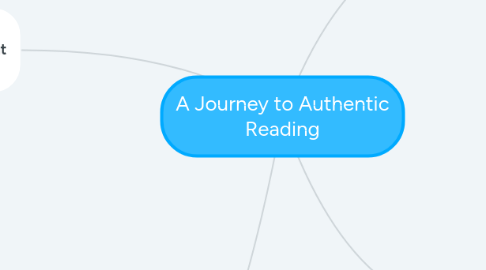
1. Facilitate Engagement by Differentiating Independent Reading
1.1. Types of Readers
1.1.1. Engaged Readers
1.1.1.1. Does Nonfiction Count?
1.1.1.1.1. Crave info and have difficulty with narrative storylines
1.1.1.2. I can, but I don't want to (even though I enjoy it)
1.1.1.2.1. Usually only read when told
1.1.1.3. Stuck in a genre/series
1.1.1.3.1. Read willingly, but within one genre. Not bad thing, but help them find more of a variety they can enjoy
1.1.1.4. Bookworms
1.1.1.4.1. LOVE reading
1.1.2. Disengaged Readers
1.1.2.1. Fake readers
1.1.2.1.1. Pretend to read, quiet with books open but disengaged. Need the most support and monitoring
1.1.2.2. Challenged Readers
1.1.2.2.1. Given up or may have cognitive or social limitations. Help them select a text they will enjoy and take advantage of school resources
1.1.2.3. Unrealistic/ Wannabe readers
1.1.2.3.1. Choose inappropriate (difficult) books and view reading as finishing a book quickly
1.1.2.4. Compliant readers
1.1.2.4.1. Read because told to. Choose books randomly
1.2. Tips for Successful Independent Reading
1.2.1. Reflect on goals and expectations for IDR and clearly articulate to students
1.2.1.1. ex: Make a t-chart today!
1.2.2. Observe students during IDR and identify those with engagement issues
1.2.3. Have a variety of materials and allow everyone to have something they want to read
1.2.4. Have a predictable structure for IDR time
1.2.4.1. 5 r's: Read, Relax, Reflect, Respond, and Rap
1.2.5. Use those comprehension strategies
1.2.6. Model your love for reading!
1.2.7. Read every day
2. Why Reading Workshop?
2.1. Choice
2.1.1. Students' volume of reading and understanding increases when they decide what they read
2.2. TIme
2.2.1. Gives students ample time to read daily
2.3. Response, Community, and Structure
2.3.1. Have time to talk about reading, creates community building
2.3.2. Improves critical thinking skills
2.4. Build formative assessments right into workshop
3. Engage Students as Readers
3.1. Provide materials relevant to student's lives
3.1.1. Keep a "reading diary"
3.2. Make a variety of reading materials accessible
3.3. Provide opportunities for sustained reading in the classroom
3.3.1. Start with just 10 mins for disengaged readers and aim to increase reading time throughout school year
3.4. Let students make choices
3.4.1. Teach students how to pick appropriate books
3.4.1.1. "bounded choice"
3.5. Let students interact with others about their reading
3.5.1. Quick share, turn and talk, book talk, book club...
3.6. Give students opportunities to be successful with challenging texts
3.6.1. Show students you believe in them
3.7. Align classroom incentives that value reading
4. Increase Reading Comprehension Skills
4.1. Make Connections! Meaning is constructed when readers make connections between prior knowledge and their texts.
4.2. Motivate & Engage
4.3. Be an influential teacher
4.3.1. Believe
4.3.2. Differentiate reading instruction
4.3.3. Provide an effective reading environment
4.3.4. Teach for a variety of purposes, with diverse methods and materials
4.4. Teach comprehension strategies
4.4.1. Previewing: Activate prior knowledge, predicting, set purpose for reading
4.4.2. Self questioning: Generate ?s to guide reading
4.4.3. Make connections: text-self, world, other text
4.4.4. Visualize: Mental pictures while reading
4.4.5. Know how words work: Vocab development
4.4.6. Monitoring: "Does this make sense?"
4.4.7. Summarize: Find key ideas
4.4.8. Evaluate: Make judgments based on text content
4.5. Provide students with a variety of types and levels of text
4.6. Use multiple modes to represent thinking
4.6.1. Projects
4.6.2. Crafts
4.6.3. Discussions
4.6.4. Journals
4.6.5. Dramatizing
4.6.6. "Hands-on" activities

